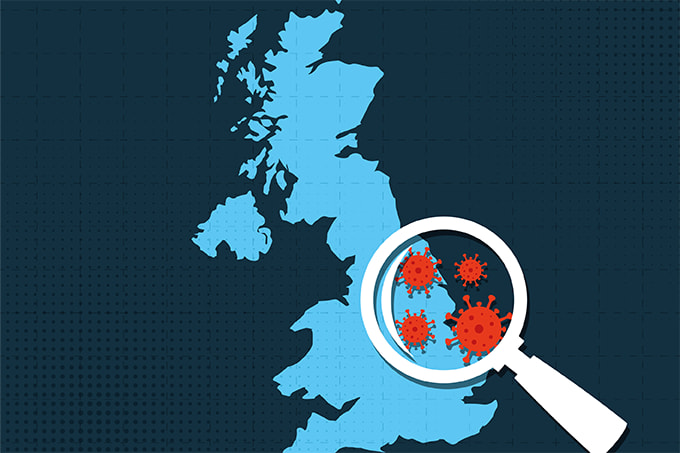We are almost two years into the COVID-19 pandemic and, though both point-of-care and lab diagnostics have come a long way, there is always room for improvement. Recognizing this, researchers from the Massachusetts Information Technology and the University of Waterloo have developed a new approach to testing for SARS-CoV-2 – based on theoretical quantum effects (1).
The approach involves coating nanodiamonds that contain nitrogen vacancy centers (atomic-scale defects that are highly sensitive to tiny alterations) with a magnetically coupled material that bonds only with the RNA sequence of SARS-CoV-2. Presence of virus-specific RNA disrupts this magnetic connection and changes the fluorescence of the diamond, which is then detected by a sensor. In the paper, the authors state that the rapid method is “fast and promises to reach a sensitivity down to a few hundreds of RNA copies with false negative rate less than one percent.”

“The proposed approach is appealing both for its generality and its technological simplicity,” said David Glenn, senior research scientist at Quantum Diamond Technologies Inc., though he was not associated with the research (2). “The sensitive, all-optical detection technique described here requires minimal instrumentation compared to other methods that employ nitrogen vacancy centers.”
What’s next? The team now hopes to translate their mathematical simulations into a working device that can be used in the lab to confirm their predictions. “Even if complications arise in translating the theoretical analysis into a working device, there is such a large margin of lower false negatives predicted from this work that it will likely still have a strong advantage over standard PCR tests,” said senior author Paola Cappellaro (2). “And even if the accuracy were the same, this method would still have a major advantage in producing its results in a matter of minutes, rather than requiring several hours.”
Hero and Teaser image provided by Matthias Weinberger from flickr.com
References
- C Li et al., Nano Lett, 22, 43 (2021). PMID: 34913700.
- David L. Chandler (2021). Available at: https://bit.ly/3IwL9qx.




